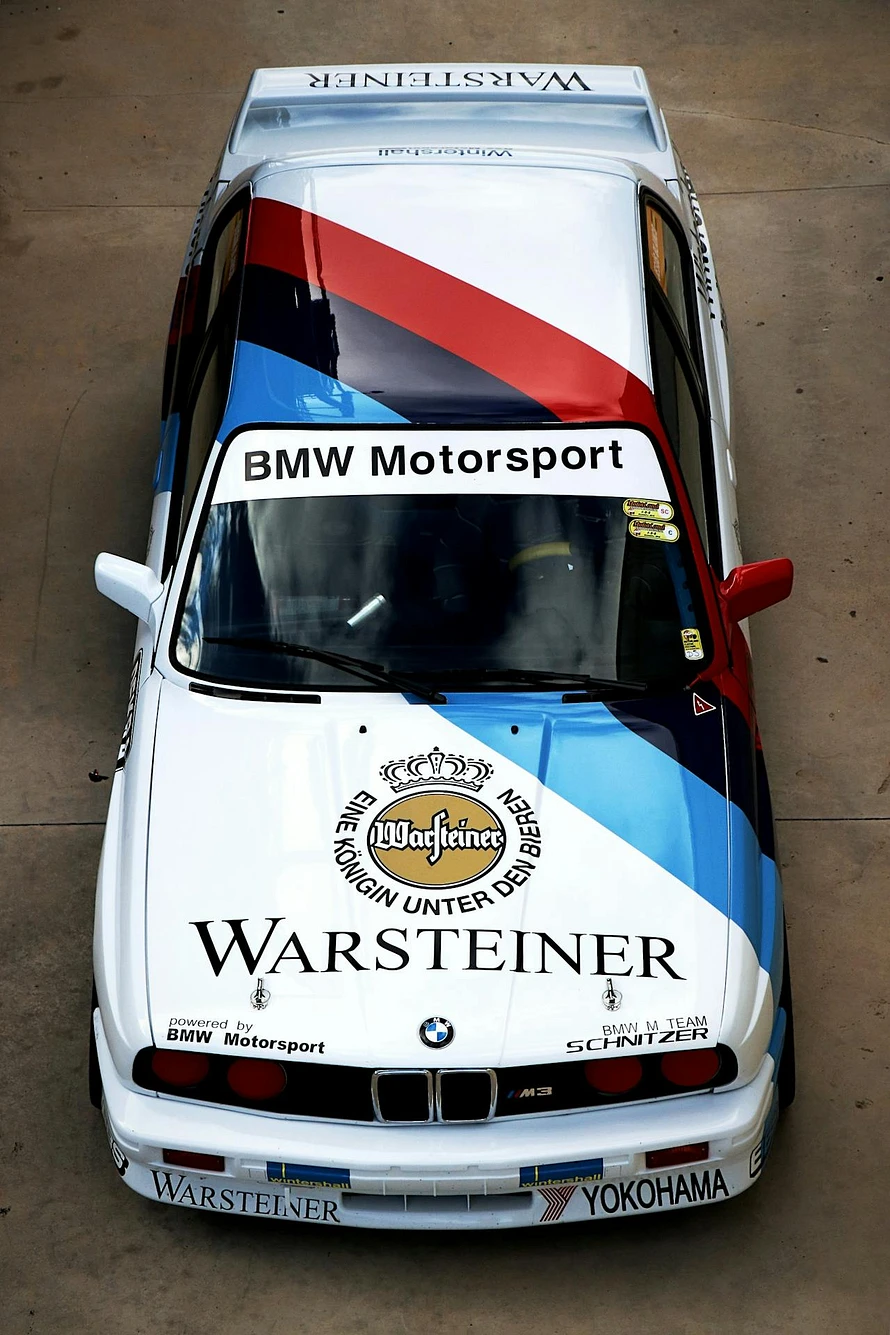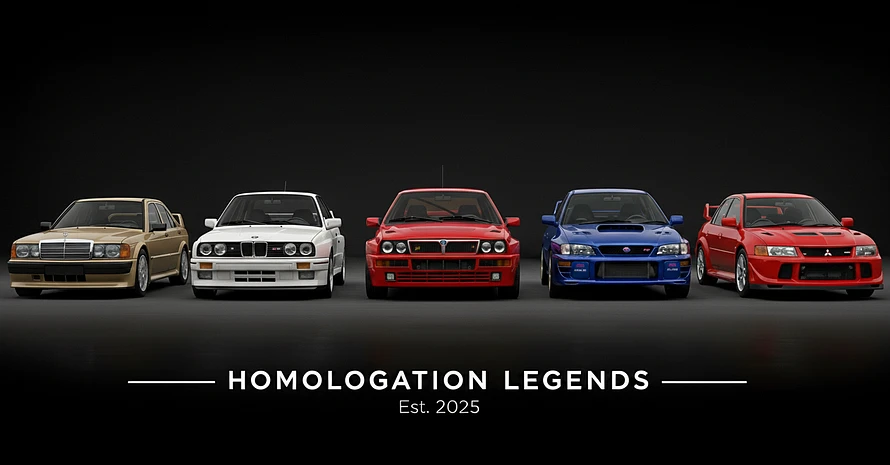The Legend of the BMW E30 M3: A Homologation Tale
It was a humid summer evening in Munich, Germany, 1986. The fluorescent lights hummed over the conference table at BMW Motorsport GmbH as engineers and executives gathered for what would become one of the most consequential meetings in automotive history. Just two years earlier, Volker Strycek had delivered BMW their first-ever DTM championship crown in 1984 with the mighty 635 CSi. But what followed was nothing short of motorsport humiliation.
The 1985 season saw Per Stureson's Volvo 240 Turbo snatch the title away from BMW, followed by Kurt Thiim's Rover Vitesse claiming victory in 1986. Two consecutive defeats. Two years of watching their Bavarian pride get trampled by a Swedish brick and a British underdog. The wounds were fresh, the sting was real, and the message from the board was crystal clear: "Gentlemen, this cannot continue."
The Birth of a Plan
The room fell silent as Dr. Paul Rosche, the legendary engine wizard who had already crafted BMW's Formula One powerplants, leaned forward. His weathered hands traced the outline of what would become one of the most important sketches in motorsport history. The solution, he argued, was radical: a purpose-built homologation special based on the humble E30 3 Series, designed specifically for DTM racing.
"We need to build a race car that just happens to be street legal," Rosche declared, his voice carrying the weight of decades in motorsport. The E30 platform was perfect: lightweight, agile, and most importantly, it could be transformed into something extraordinary. But this wouldn't be a simple engine swap or aerodynamic package. This would be a complete reimagining of what a touring car could be.
The S14 Symphony
Deep in the bowels of BMW's development center, something magical was taking shape. The S14 engine was a masterpiece that would become the beating heart of the M3. It was unlike anything BMW had created for the street.
It started with the proven M10 four-cylinder block, the same foundation that had carried BMW through decades of motorsport. To that, engineers mated a 16-valve cylinder head derived from the M88/S38 six-cylinder, essentially slicing BMW’s race-bred inline-six into four cylinders of pure fury. The result was compact, robust, and tailor-made for high revs.
The engineers worked through the night, their coffee-stained notebooks filled with calculations for cam profiles, compression ratios, and exhaust tuning. They knew they were creating something special. An engine that could sing at 7,250 rpm on the Nordschleife while still being docile enough for a trip to the grocery store.
The Widebody Revelation
While the engine was the heart, the body was the soul. BMW's designers faced a unique challenge: how do you make a compact sedan look aggressive enough to intimidate on the track while remaining elegant enough for the street? The answer came in the form of flared wheel arches, a deep front air dam, and a rear spoiler that announced the M3's intentions from a mile away.
Every bulge, every line, every curve served a purpose. The widened fenders weren't just for show. They housed wider wheels and tires that would give the M3 the grip it needed to dominate the competition. The aerodynamic package was wind-tunnel tested and track-proven, creating downforce without sacrificing the car's inherent balance.
Homologation Heroes
By March 2nd, 1987, homologation was approved, but BMW knew they had created something far beyond a mere compliance exercise. The demand was so great from the start that it was manufactured and sold in far larger numbers than originally planned. What was meant to be a limited run of race car specials became a phenomenon.
With a maximum output ranging from 200 to 238 horsepower depending on the variant, the E30 M3 was a revelation on both street and track. It possessed that rare quality that separates good cars from legends. It could be all things to all people. A daily driver that happened to be a barely tamed race car. A grocery getter that could embarrass supercars on a winding mountain road.
Racing Redemption
The redemption came swiftly. In 1987, Eric van de Poele piloted the BMW M3 to its first DTM championship, ending BMW's two-year drought and beginning what would become one of the most dominant runs in touring car racing history. This compact, strong, sporty machine would become the most successful touring car in racing history.
But success breeds evolution. BMW continuously refined the E30 M3 throughout its production run from 1986 to 1991, with various "Evolution" and special editions like the Cecotto and Ravaglia editions. Each iteration pushed the boundaries further, extracting more power, improving aerodynamics, and refining the already near-perfect formula.
The Evolution Continues
Like the more extreme Group B category, Group A permitted manufacturers to produce further enhanced Evolution variants of their homologated vehicle every twelve months. BMW seized this opportunity with the enthusiasm of engineers given free rein to pursue perfection.
The Evolution models weren't just faster. They were statements of intent. Each one pushed the envelope of what was possible within the regulations, featuring more aggressive aerodynamics, increased power output, and weight-saving measures that would make modern supercar manufacturers proud. These weren't just cars. They were rolling testbeds for BMW's racing ambitions.
Legacy of Legends
With a limited production run of 17,970 units, the E30 M3's rarity and successful racing pedigree made it the foundation of BMW's M Division identity.
What was originally conceived as a compliance car for Group A rules became a phenomenon. Built in numbers far beyond the 5,000 required, but still rare enough to cement its legendary status.
It established a template that continues to this day: take a practical BMW, inject it with motorsport DNA, and create something that transcends the sum of its parts.
The E30 M3 proved that homologation specials could be more than cynical compliance exercises. In the right hands, with the right vision, and with the proper respect for both racing and road use, they could become automotive legends that define generations of enthusiasts.
The Ripple Effect
But success breeds imitation, and BMW’s triumph would not go unnoticed by their Stuttgart rivals. Across Germany, engineers at Mercedes-Benz were taking careful notes, their pride stung as Bavaria’s finest began to dominate the very touring car stage where Mercedes also wanted to shine.
The 190E 2.3-16, Mercedes’ own Cosworth-breathed homologation special, had been in development since the early 1980s, even arriving before the M3. But BMW had raised the bar, turning a humble 3 Series into a thoroughbred racer that redefined what a road-going touring car could be.
Mercedes would not stay quiet forever. Their answer came in the form of the 190E 2.5-16 Evolution models of 1989 and 1990, ever wilder iterations built to claw back ground in what became an escalating “Evolution war.” This arms race of homologation specials defined the golden era of DTM racing when production cars stretched the limits of credibility, and every season brought something more extreme. But more on that later...
The Legend Lives On
From that humid summer evening in Munich to the racetracks of Europe and the driveways of enthusiasts worldwide, the BMW E30 M3 transformed from a response to racing humiliation into one of the most beloved and respected performance cars ever created. It reminded the automotive world that sometimes, the best road cars are born on the racetrack, and the greatest legends emerge from the crucible of competition.
The M3 badge lives on today, but it all started with that first E30. A car that dared to be both civilized and savage, practical and passionate, homologated and hallowed. In the annals of automotive history, few cars can claim to have achieved such perfect balance between their intended purpose and their lasting legacy.
The legend was born not from marketing campaigns or focus groups, but from the simple desire to win races and the engineering brilliance to make it happen on the street as well as the track. That, perhaps more than anything else, is what made the BMW E30 M3 truly legendary.


